In today’s digital age, where a mouse click or screen tap can drive purchasing decisions, understanding the impact of online review statistics is crucial.
Online reviews are not just a summary of customer sentiments; they are a vital element in shaping marketing strategies. They influence buying decisions, affect Google search rankings, and build customer trust.
This blog post is your ultimate guide to the best insights to understand the power of online reviews for your business. Here’s a sneak peek at the key findings of our online review research as of 2023:
- 71% of online reviews are written on Google.
- 50% of consumers read more than five online reviews before choosing a business.
- Online reviews impact SERP (Search engine results page) rankings for businesses.
- SMS is the most popular channel for businesses to send review requests to customers.
Let’s dive into more online review statistics and understand how online reviews shape the business landscape.
Table of contents
- The impact of online reviews: An overview
- Consumers rely heavily on online platforms and review sites to guide their buying decisions.
- The majority of consumers are not stopping at just checking the star ratings.
- Online reviews directly impact a business’s Google search ranking.
- Customers care about negative online reviews.
- Adding reviews on Google ads via Google Seller Ratings improves CTR.
- Focusing on online reviews improves the impact of your marketing campaigns.
- The dynamics of online review requests on the business landscape
- The most popular online review platform and trends
- Online review sentiments: An overview and management
- Leverage online reviews with Birdeye
The impact of online reviews: An overview
If you’re a business owner trying to understand if focusing on online reviews is worth the effort, the answer is a resounding yes. This section delves into why prioritizing online reviews is beneficial and essential in today’s digital landscape.
Consumers rely heavily on online platforms and review sites to guide their buying decisions.
Birdeye’s study shows consumers rely on word-of-mouth recommendations, search engines, and customer review sites to influence their local business searches.
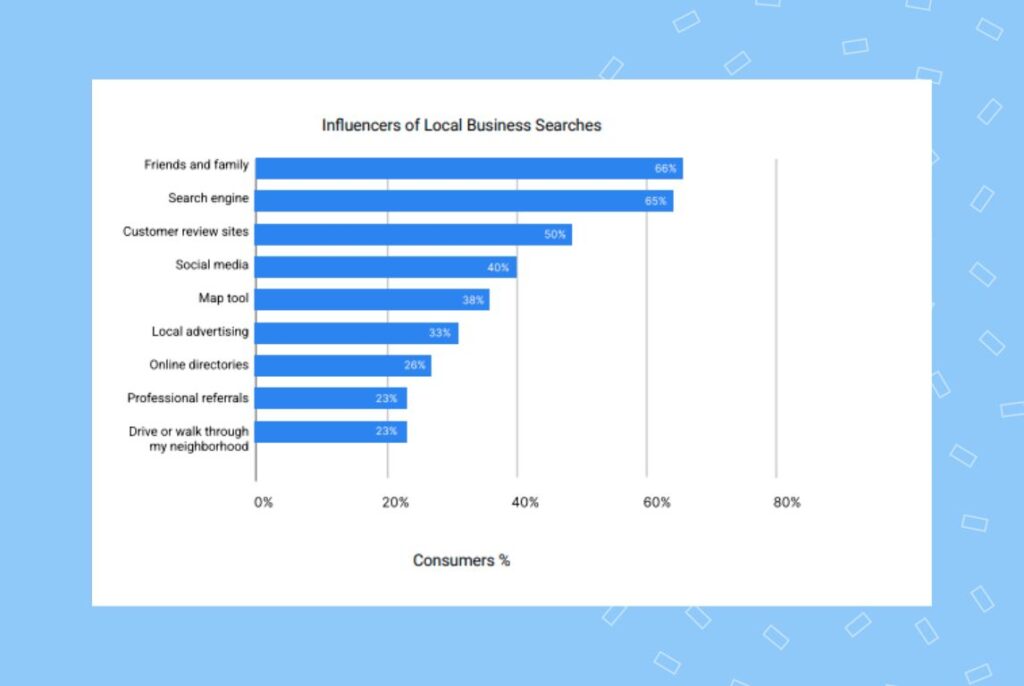
Restaurant searches were the highest in the past year, followed by local retailers and healthcare providers. Across various industries, it is widely acknowledged by consumers that they conduct online research about a business approximately 68% of the time before making a purchase.
This indicates that customers turn to platforms like Google and niche review sites to decide which business to engage with.
However, this trend is not a recent development. It has been steadily increasing over the past four years. In 2021, there was a 10% rise in online reviews, accompanied by a surge in business review requests. More details on this will be discussed in the following section.
The majority of consumers are not stopping at just checking the star ratings.
In our study, 92% of respondents mentioned they read at least two reviews, while 50% claimed to read more than five reviews to form an opinion. The volume of customers reading online reviews has also seen a consistent upward trend since 2019. Studies show that 87% of customers mentioned they read online reviews in 2020, which was a significant increase from 81% in 2019.
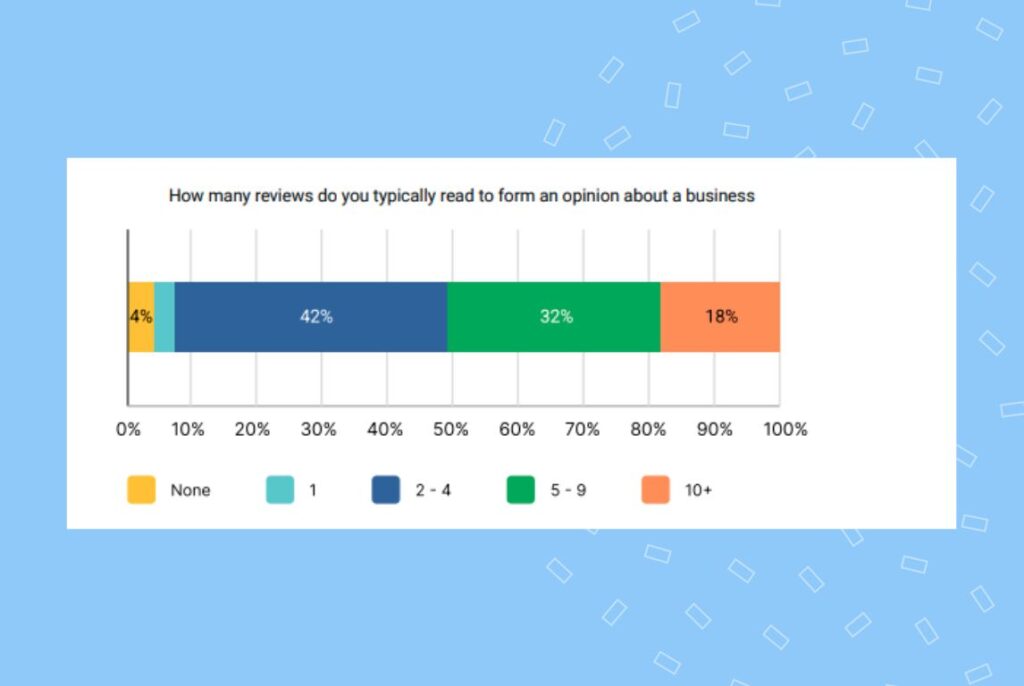
So, the more reviews a business has, its likelihood of success is higher.
Online reviews directly impact a business’s Google search ranking.
Studies show that businesses with more reviews and higher ratings often feature in the Google local map pack. And we have seen this come true for many of our customers.
“We have seen an uptick in SERP placement for clients who increase their review solicitation by more than 25%, and Birdeye gives our clients a simpler way to manage their online reputation, empowering them to shape and enhance it.”
Sean Collier, COO, Etna Interactive
Customers care about negative online reviews.
Birdeye survey shows that 85% of customers would not use a local business’s product or service if they had negative reviews within the last twelve months.
Moreover, 78% said they would not choose a local business with a poor online reputation.
Adding reviews on Google ads via Google Seller Ratings improves CTR.
Businesses can showcase their customer reviews on Google Ads, significantly improving their click-through rate. With the Google Seller Ratings ad extension, you can showcase your business’s total number of reviews and the average star rating.
It also reduces your cost per click and improves your ad quality score.
“We saw a 2.7% improvement in CTR, a conversion rate that is 48.4% higher, and a CPA that is 19% cheaper than ads that did not include a seller rating. That’s better clickthrough, higher conversion, and a lower CPA, and Birdeye makes it simple to set up. A busy digital marketer’s dream! “
Justin Shook Southern Careers Institute
Focusing on online reviews improves the impact of your marketing campaigns.
Birdeye’s study found that marketers see more leads and conversions from their online review and reputation management efforts.
In fact, 57% of marketers believe online reputation management is more important than advertising. And 88% of marketers see a direct connection between online reputation and revenue growth.
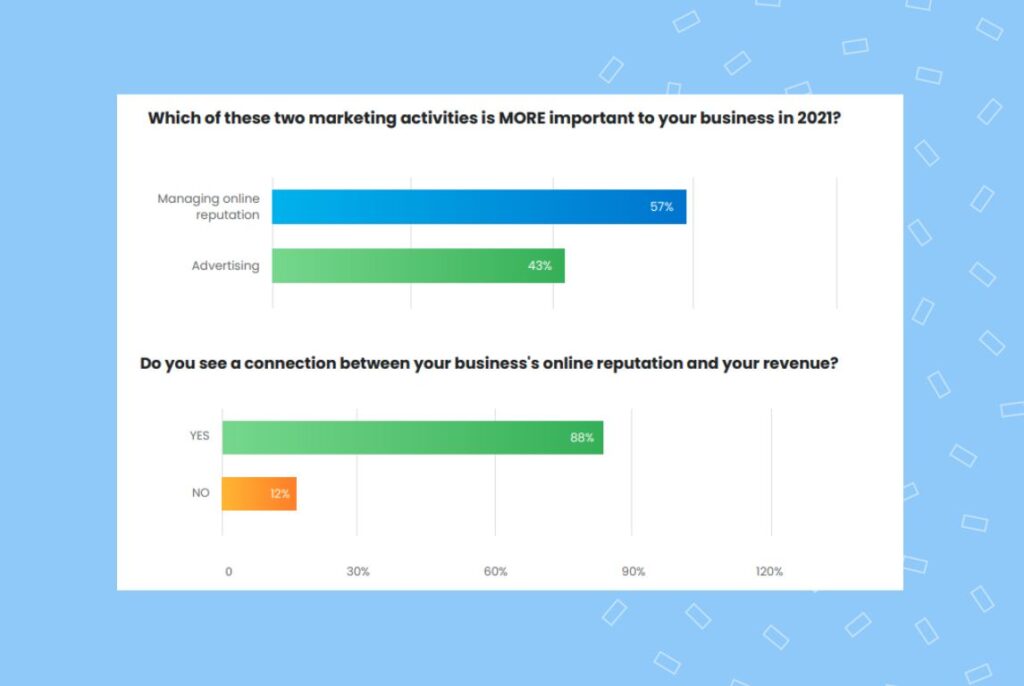
The dynamics of online review requests on the business landscape
The upward trend in online review volume is not an isolated incident. This shift in the review landscape is due to a shift in consumer behavior and increased business review requests.
Over the past few years, Birdeye has observed a clear pattern: businesses that send out more review requests tend to accumulate a higher number of online reviews across various platforms.
To elucidate the point, this section covers the businesses that send the most review requests and its impact on their online review volume.
Who sends the most review requests?
In 2020, Birdeye research found that retail businesses sent the highest review requests, followed by healthcare, beauty and wellness, automotive, consumer goods, art and entertainment, and transportation industries.
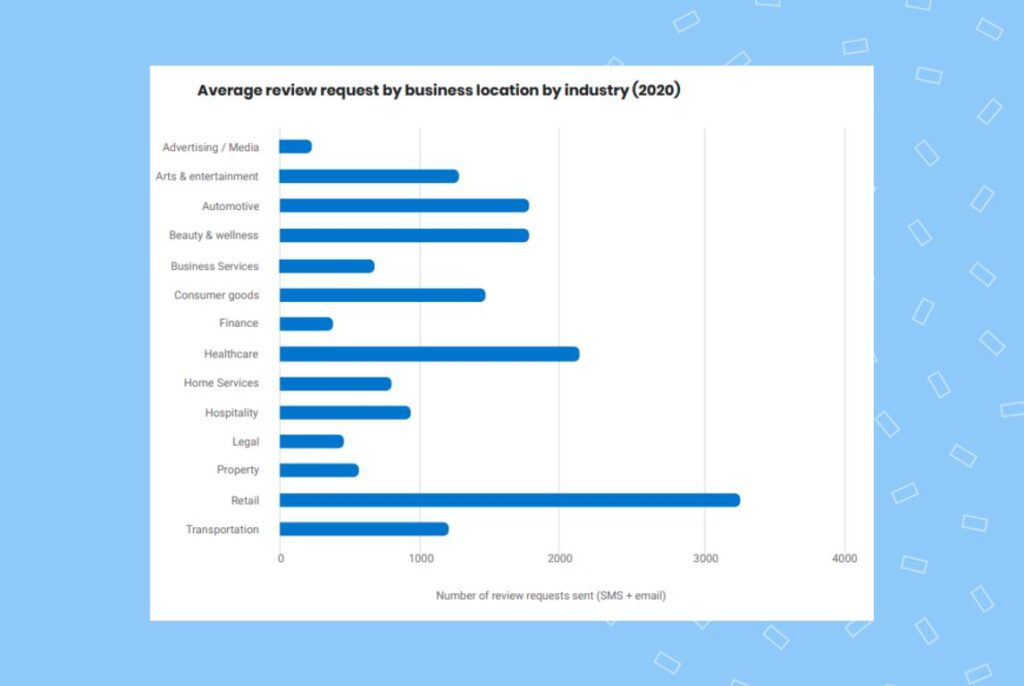
Related read: Top 12 retail reviews site to fuel brand awareness and growth
This number is only growing as businesses on the Birdeye platform sent 15% more review requests in 2021 compared to 2020.
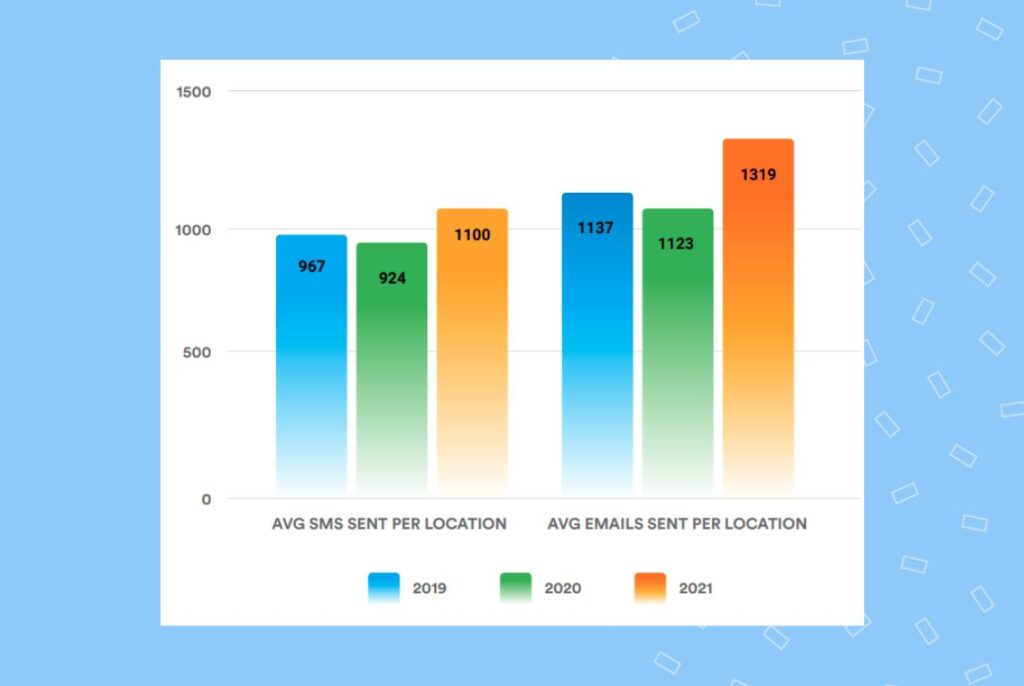
Collect, manage, and market online reviews from a single dashboard
Want to see the impact of Birdeye on your business? Watch the Free Demo Now.
How are businesses sending review requests?
Sending review requests yields positive results. For business owners, the next step is figuring out how to achieve similar results for their own businesses. Here are a few statistics that will help you choose the best platform to send review requests:
1. SMS online review request statistics
Birdeye research shows that 49% of review requests were sent via SMS, up from 45% in 2020. This channel had a conversion rate of 32% in 2020, also up from 30% in 2020.
Studies also show that text messaging or SMS is a highly preferred communication channel, with 9 out of 10 consumers favoring it.
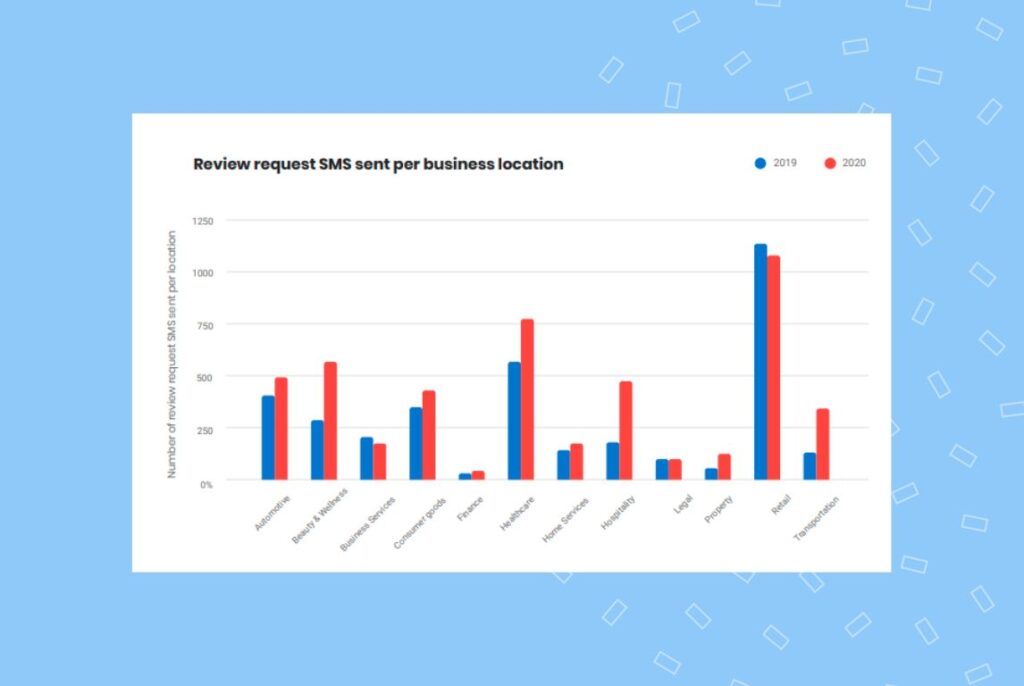
Retail businesses sent over 1000 review request SMS per business location in 2020; healthcare businesses sent 750 requests, followed by beauty and wellness businesses with 500 review requests.
2. Email online review request statistics
Birdeye’s study shows that 55% of review requests were sent via email in 2020, with an open rate of 69% when sent from the Birdeye platform. These emails also have a 22% click-through rate.
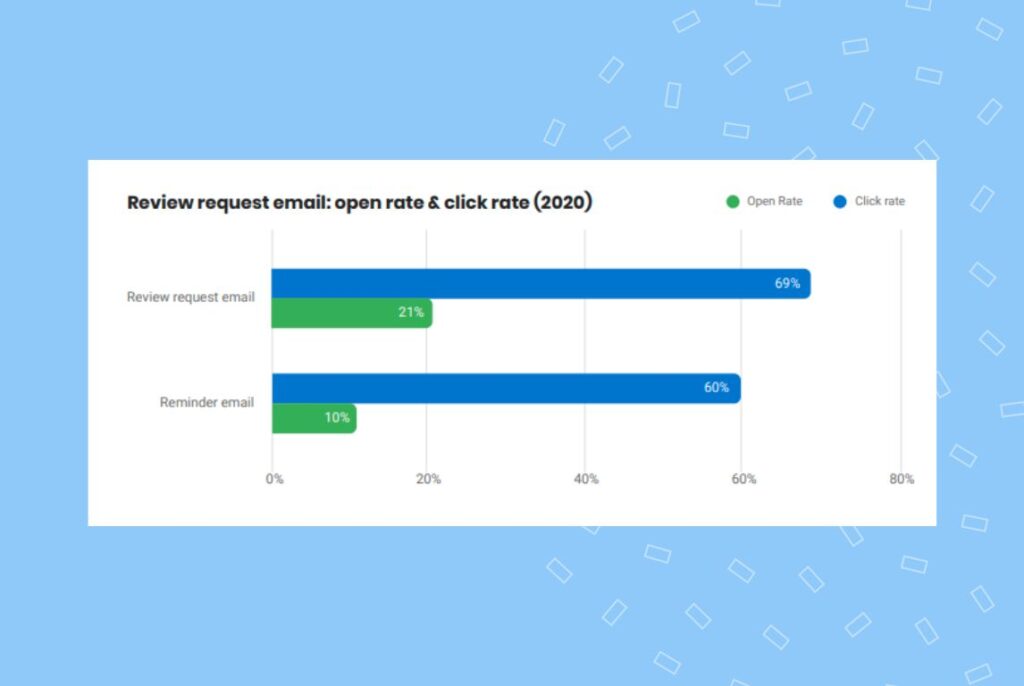
Retail businesses sent over 2000 review request emails per business location in 2020, followed by automotive businesses with nearly 1500 requests and healthcare businesses with around 1200 review requests.
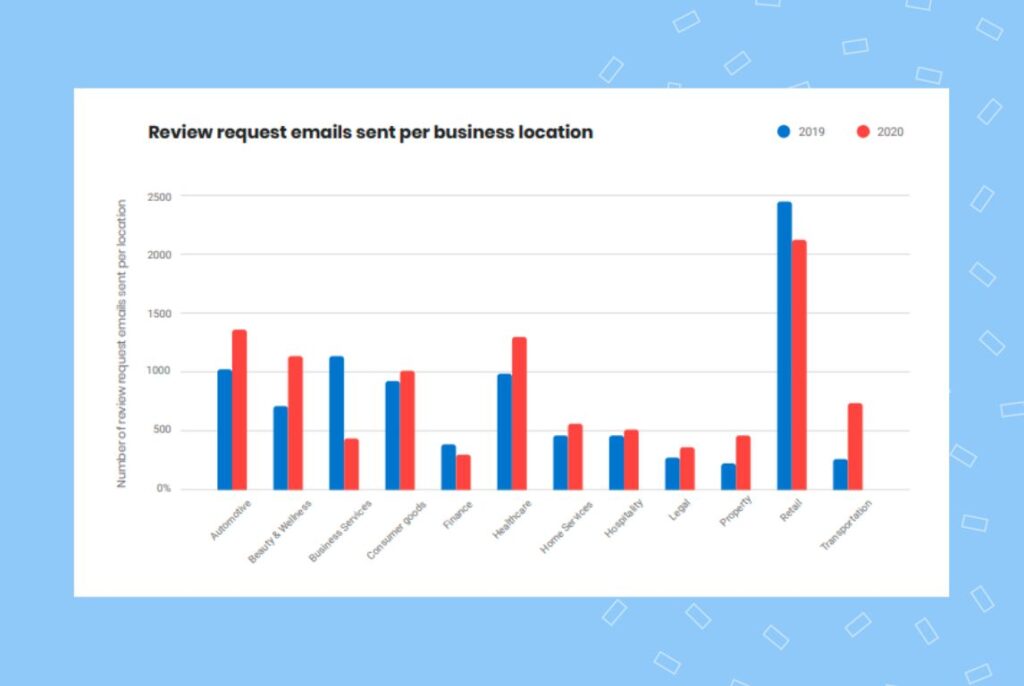
The industry standard for peak email open rate is 25%, with a peak click-through rate of 3.3%. Birdeye businesses enjoy a much higher open and click-through rate while also having the option to send reminder emails that vastly improve the chances of securing an online review from a customer.
Based on our experience, we recommend sending between one and three reminder emails for review requests.
The impact of automated review requests
Embracing automation for sending review requests has significantly helped businesses improve their presence on online review sites over the past few years. Businesses deal with hundreds of customers across many locations, and keeping track of manual requests can be tricky.
Automating review requests ensures you never miss a customer and significantly boosts this important channel of branding and customer feedback. Let’s have a look at the following stats:
- Birdeye research shows that businesses across industries employ automated review requests to generate reviews. In fact, 92% of automated review requests were sent via Birdeye in 2021.
- The healthcare industry is by far the leader in sending automated review requests, with 95% automated review requests, followed by business services, retail stores, and transportation.
These industries also enjoy a higher share of Google reviews, with legal and finance businesses ( business services) coming on top with 74% and 66% review share, respectively, followed by healthcare businesses with 64% reviews (as reported in 2020).
The most popular online review platform and trends
There are thousands of online review sites in addition to the popular ones like Google, Facebook, BBB, and so on.
Interestingly, customers on the Birdeye platform have over two review sites configured within their review requests.
However, not all review sites are created equal, with some standing out significantly more than others. Our findings indicate that Google is the overall winner in this competition.
- Google is the most popular review site, with 71% of online reviews being written on the platform in 2021, up from 67% in 2020. Facebook is losing its rank as a popular review site, declining from 19% in 2019 to only 3% in 2021.
- An industry-wise breakup of popular review sites looks like this:
- Automotive:
Customers wrote 67% of automotive reviews on Google, followed by ShopperApproved, Facebook, DealerRater, Carwise, and others.
- Legal:
Legal businesses also prefer Google as their review channel, with 42% of requests being sent for Google reviews, followed by Facebook, Avvo, BBB, lawyers.com, and others.
Customers also prefer Google to share their feedback on legal businesses, with Google receiving 75% reviews, followed by Lawyers.com, Facebook, BBB, and others.
Related: Top review sites for lawyers
- Property management:
From property management customers, Google received 67% of reviews, followed by Facebook, Apartments, Apartment ratings, Zillow, and others.
- Restaurants:
In 2020, restaurants received an equal volume of reviews on Google and Facebook (45% each), followed by niche review sites like Open Table. However, in 2021, Google outshined other platforms by getting 76% of all reviews, followed by other niche review sites (21%) and Facebook (3%).
- Home services
This industry sees customer reviews across many popular sites such as Google, Facebook, BBB, Consumer Affairs, Bizrate, HomeAdvisor, Home Warranty, and Angie’s List.
In 2021, Google was the top choice for customers to review home service businesses, followed by various niche review sites.
It is evident that a strong presence across contractor review sites can translate into a robust online reputation for home service businesses.
- Finance
The finance industry also heavily relies on niche review sites for review collection. While Google is the top choice with 67% of reviews, industry-specific review sites also have a heavy share in finance reviews.
- Healthcare
Healthcare businesses also see reviews across various industry-specific review sites in addition to Google (61%).
Online review sentiments: An overview and management
Requesting customers for online reviews, thereby ensuring a steady flow of feedback across multiple platforms, is vital for your business’s growth. However, managing them is even more critical for maintaining your online reputation.
Businesses must understand the prevailing sentiments in online reviews, follow the trends in review responses, and comprehend the nuances of review marketing to steer through online reputation management.
In this section, we’ll explore the key statistics related to online review sentiment and online review management.
Online review sentiment statistics
Most businesses shy away from sending review requests due to concerns about receiving overwhelmingly negative reviews. However, this fear is often unfounded. We have seen that most customers are happy to write positive reviews when businesses ask.
Additionally, even negative reviews become manageable with proactive review management strategies.
In fact, a recent Birdeye study showed that 54% of customers write reviews when they have a positive customer experience with a business. In comparison, only 38% of customers choose to write reviews after a negative customer experience.
Here is a breakup of online review sentiment by industry:
- Healthcare and finance businesses have the highest volume of positive reviews, with a positive review share of 92% to 94%.
- Most reviews tend to fall at the extremes of customer experience, with neutral reviews having a minimal share across industries.
- Hospitality, property management, and transportation businesses get the most negative reviews, with a negative review share of 16% to 28%.
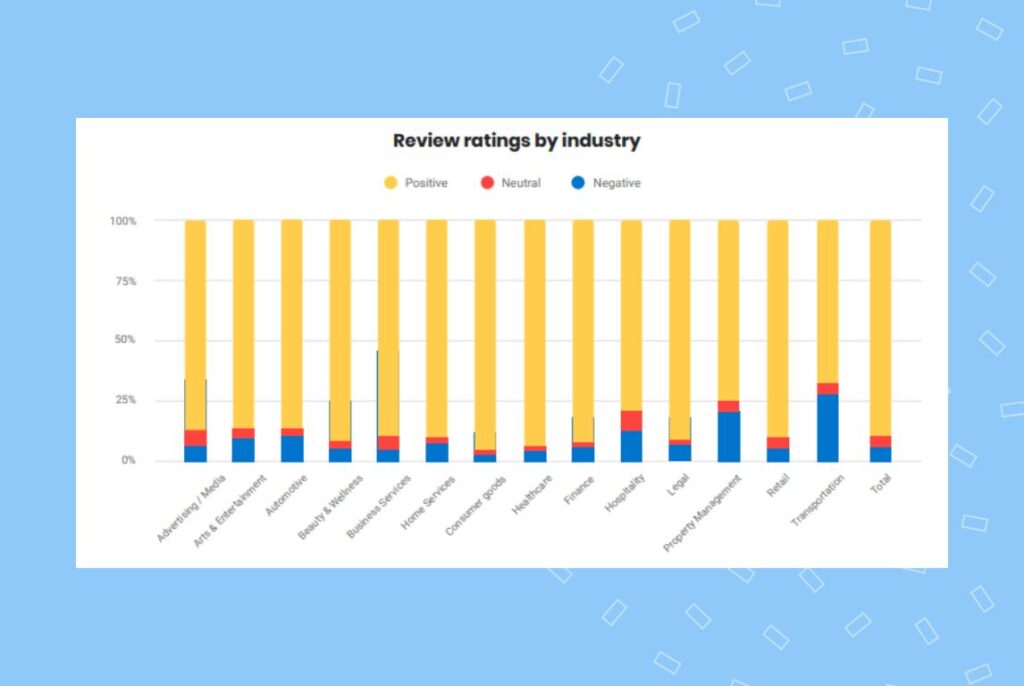
Online review management statistics
Businesses have realized the importance of responding to online reviews, with more and more businesses ensuring that their online reviews have prompt responses.
According to Birdeye research data, 41% of customer reviews had responses from businesses compared to the 28% response rate in 2020.
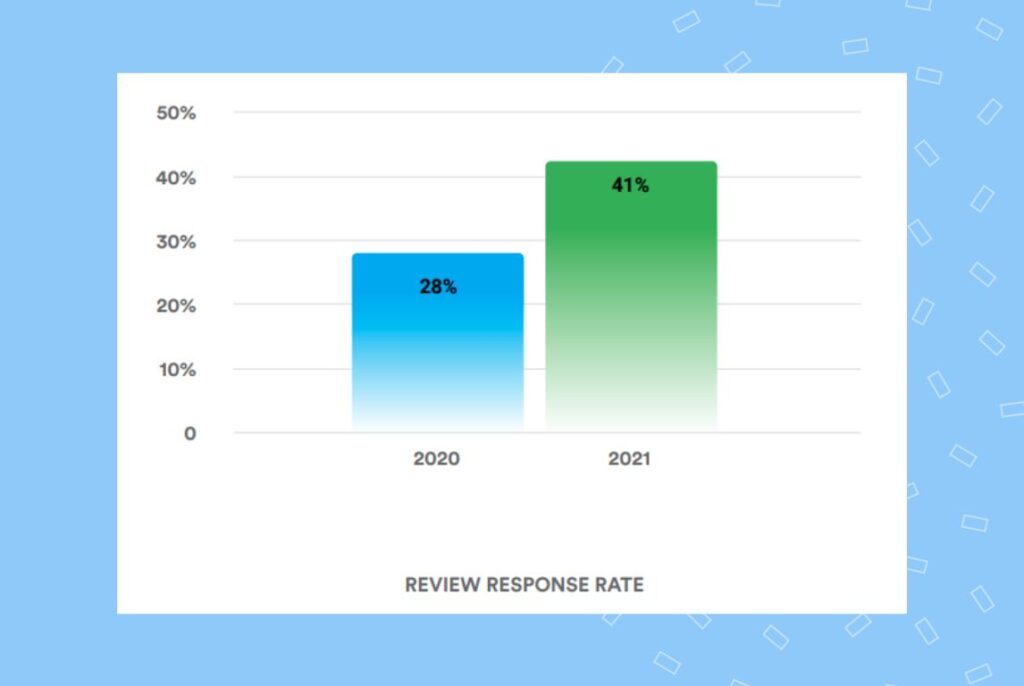
Specifically, businesses from the finance, beauty & wellness, and retail industries responded to reviews more than any other industry.
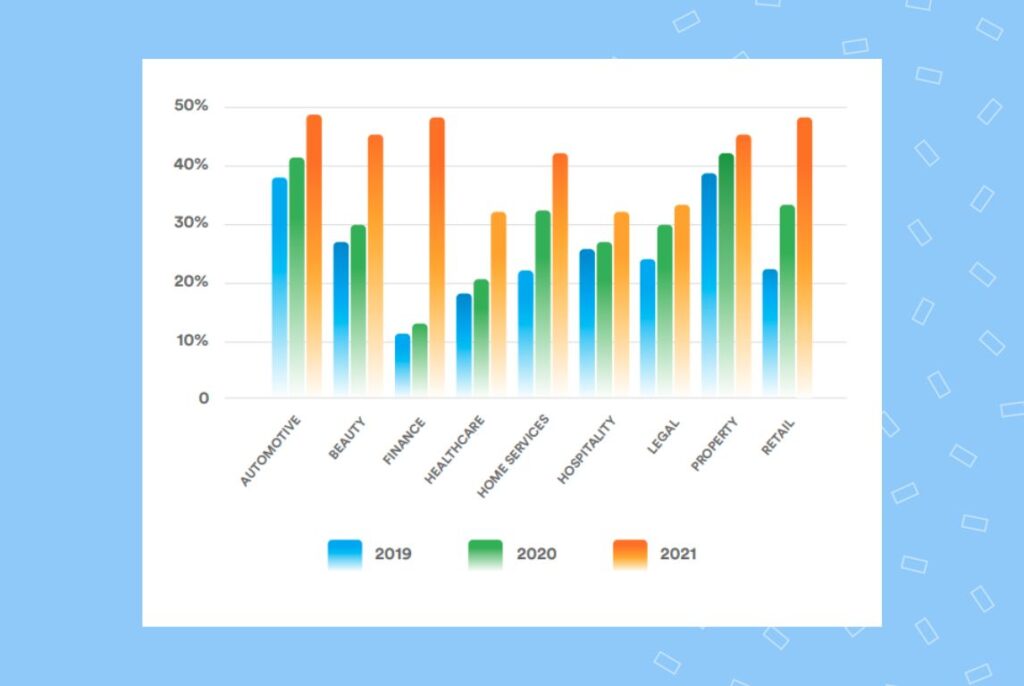
Personalization of review responses:
Businesses are also starting to personalize review responses to show that they monitor reviews and care about customer feedback.
According to Birdeye research, 90% of businesses that respond to reviews opt for manual responses to personalize their message.
While we agree that personalization is important, businesses do not have to opt for manual processes to do the heavy lifting.
With Birdeye Reviews, businesses can set up review response templates that include the customer’s name and a customized response according to the star rating. If you want to send a manual custom response, use our BirdAI tool to help you draft the best possible response.
Leverage online reviews with Birdeye
Online reviews hold a major significance in the success of local businesses. They can shape purchasing decisions, customer preferences, and business online reputation.
To outshine competitors and gain a stronghold in the industry, businesses must:
- Ensure every customer receives a review request and follow up regularly to help them leave a review.
- Monitor online reviews to understand customer feedback and act on any negative reviews as soon as possible.
- Respond to all customer reviews to show they are present and ready to hear customers.
- Showcase positive reviews on marketing channels to gain the trust of potential customers.
- Leverage popular review request channels such as SMS and email for a high response rate.
- Identify popular niche review sites and ensure customers are writing reviews on them.
Review management can seem an enormous undertaking, especially for multi-location businesses.
That is where Birdeye steps in to help businesses collect, monitor, manage, and market online reviews. Birdeye review requests have some of the highest success rates. It’s also a trusted Google partner that helps you get your customer reviews live faster than ever.
Check out the pricing for our tool now and grow your business with the power of online reviews.
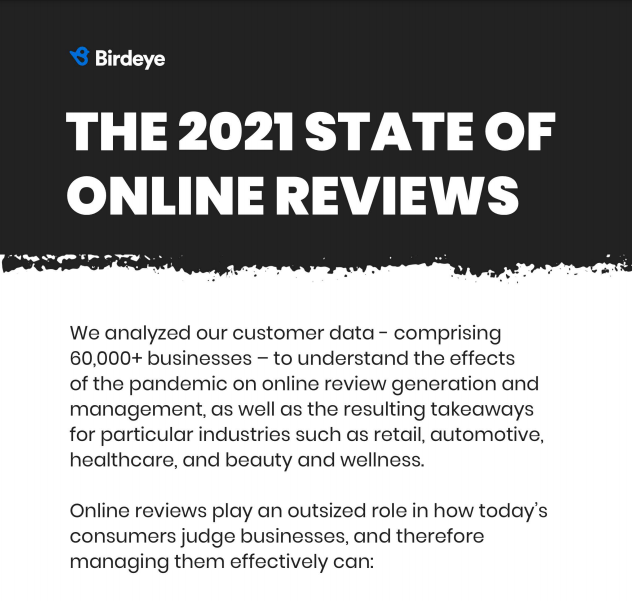
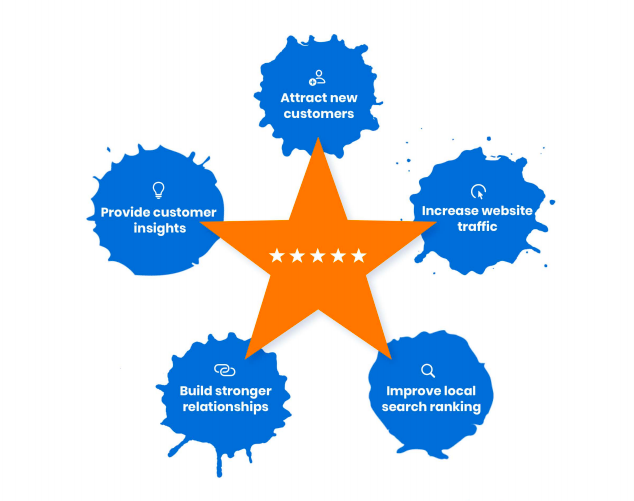
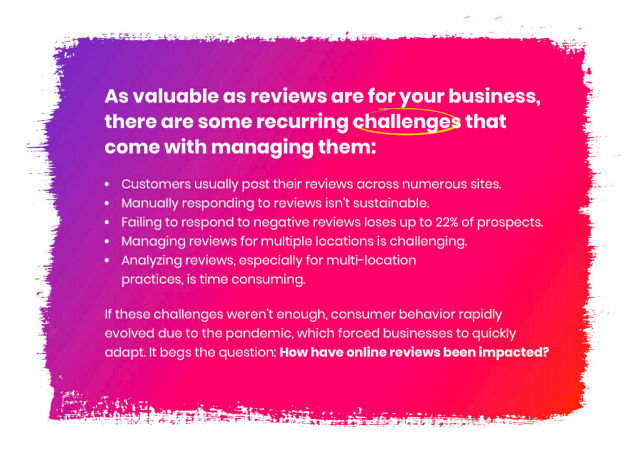
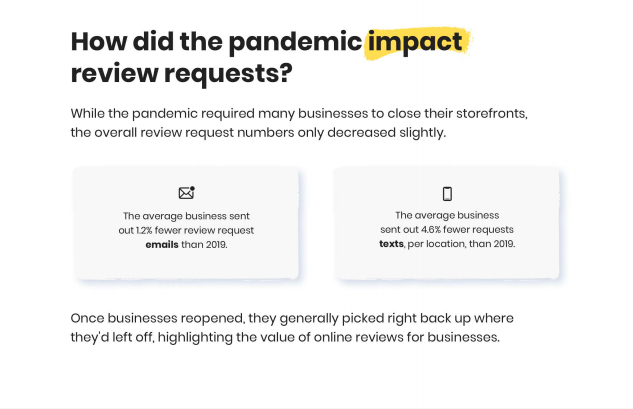
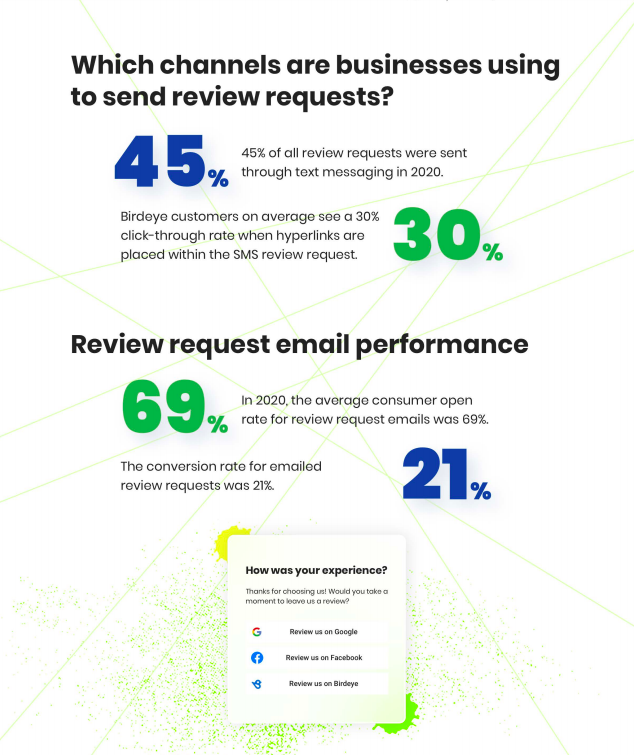
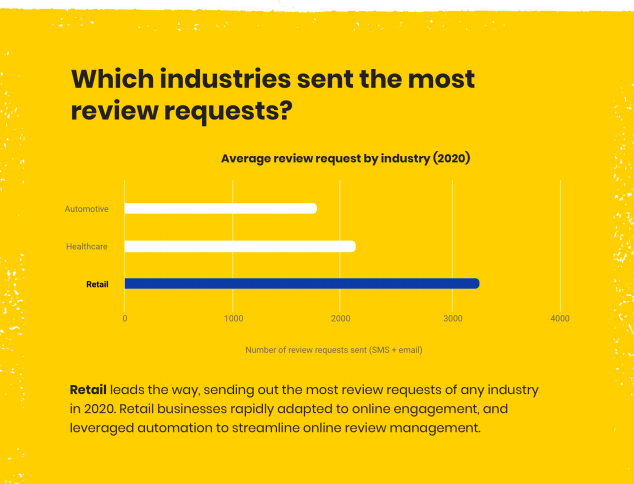
Before the pandemic, retail was already dramatically pivoting to e-commerce, and this pace was further fast-tracked due to social distancing. Consumers spent a whopping $861.12 billion online with U.S. merchants in 2020, up an incredible 44.0% from 2019.
As more brick and mortar businesses undergo digital transformation, this trend is not only likely to stay but accelerate. In the absence of in-person transactions, more businesses are leveraging review requests as a means of controlling their online reputation and as a way to better understand how they can improve the customer experience.
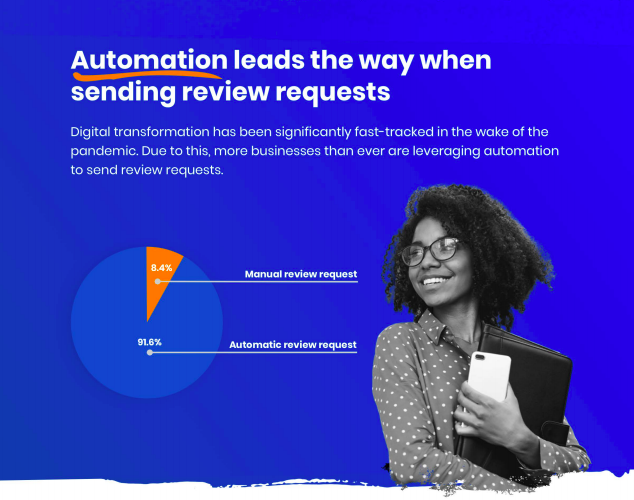
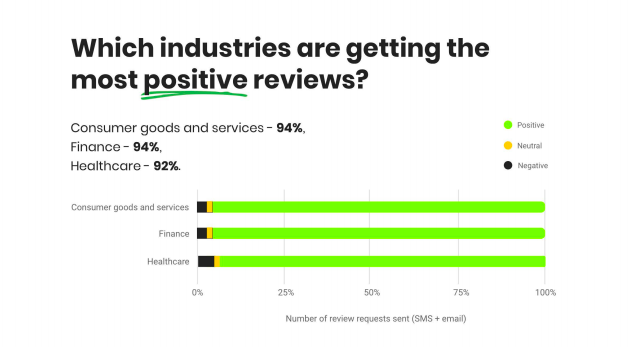
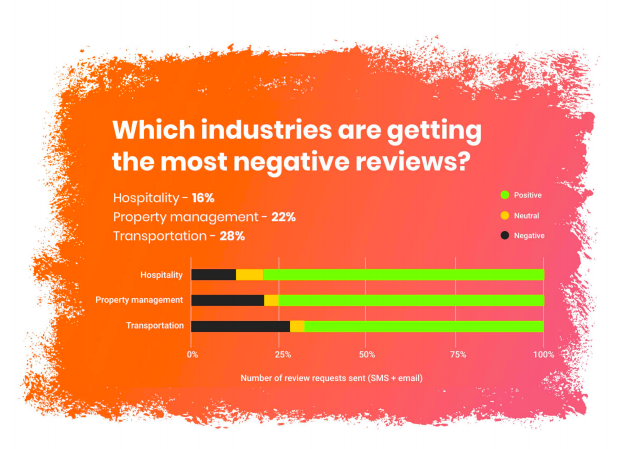
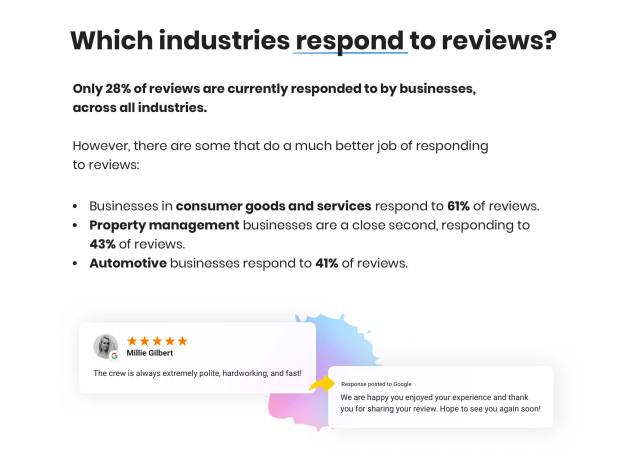
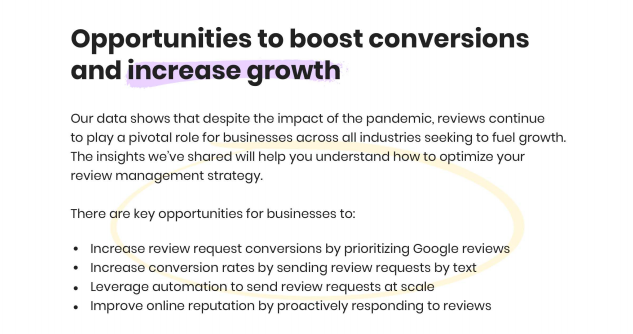

Originally published









